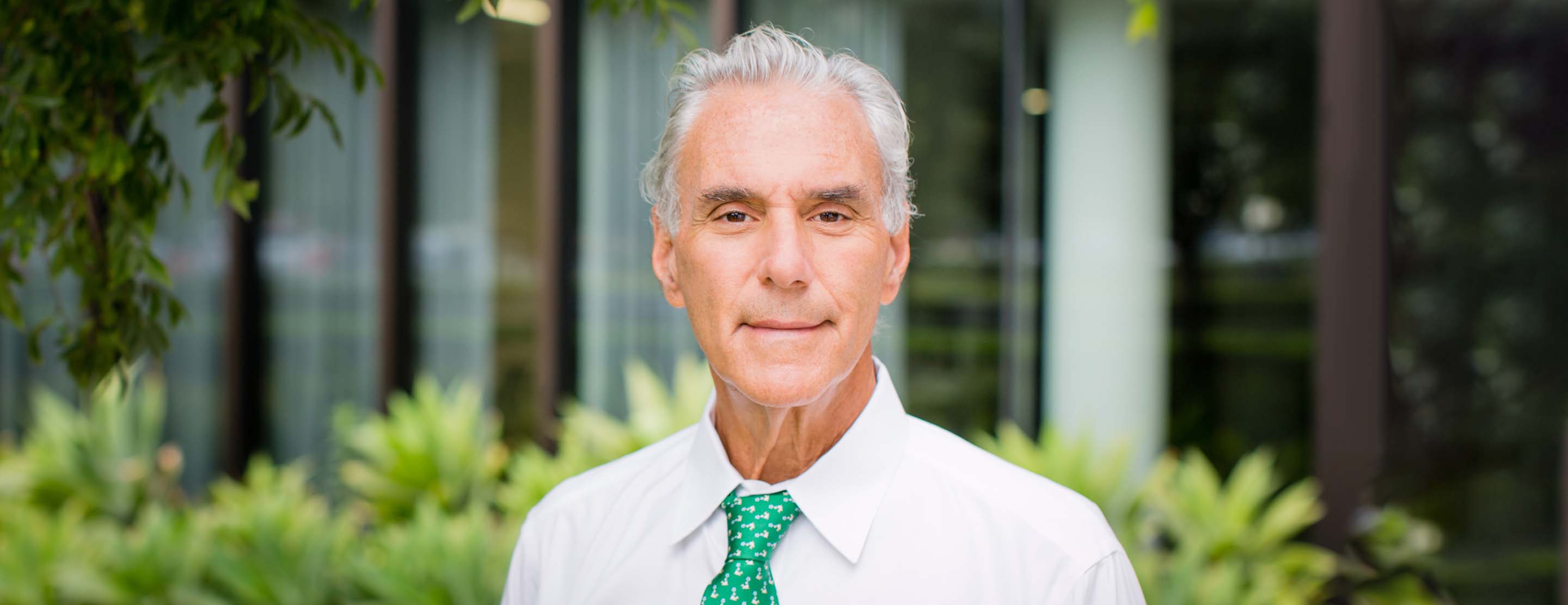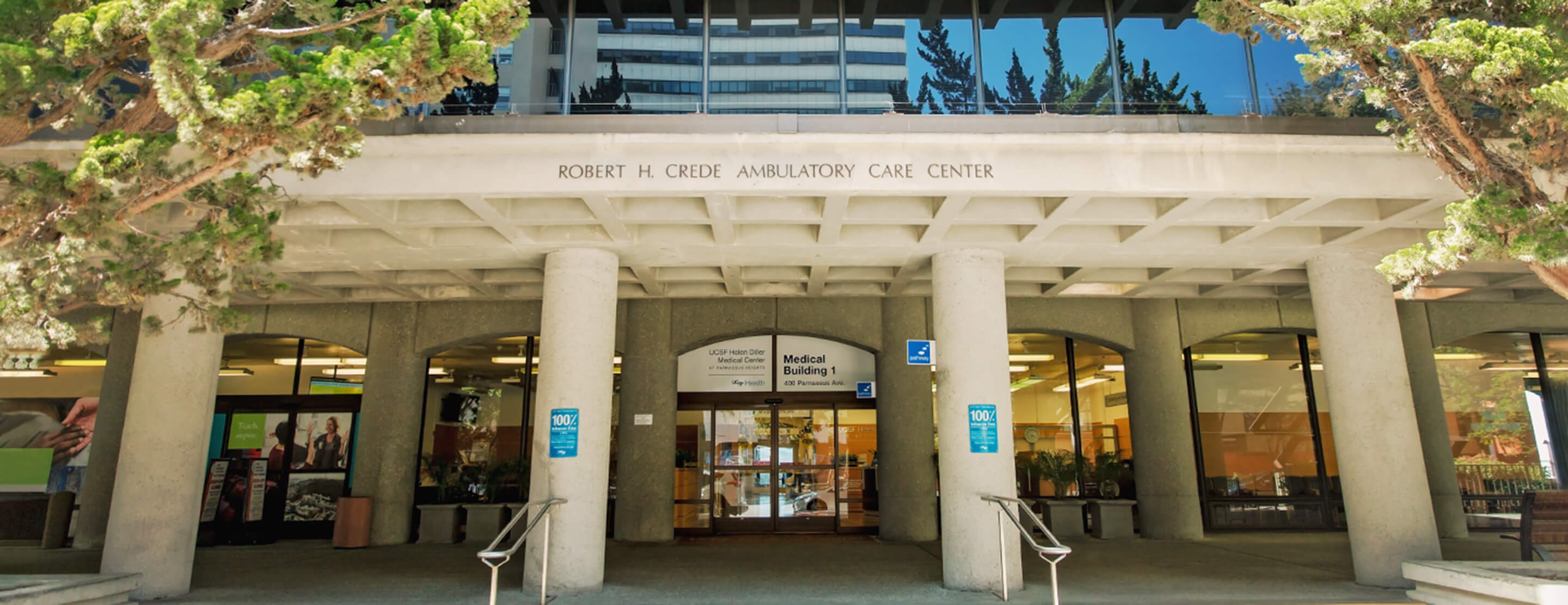Dr. Mitchel Berger is chair of the neurological surgery department at UCSF and director of the Brain Tumor Research Center. Berger grew up in Miami, attended Harvard and turned to medicine after his first career choice – professional football – didn't pan out. A physician since 1979, Berger's specialty is the treatment of brain tumors in adults and epilepsy related to brain tumors. He also has pioneered brain mapping techniques used to identify speech, motor and sensory areas that should be avoided during surgery.

Doctor Q&A: Mitchel Berger
Why did you decide to become a neurosurgeon?
There were probably two reasons. One was that in medical school, the subject matter that made the most sense to me was the nervous system. That clicked immediately with me. Number two, I always liked to build things. I built my mother a stool; I built my own dresser. I really liked to work with my hands. So I put those two things together and there it was – neurosurgery.
The diagnosis of a brain tumor used to be a death sentence. Is that changing?
It's important to remember that there are many different types of tumors with different prognoses. But in general, it's a much more encouraging field now for several reasons. We understand the genetics and the biology of these tumors so much better than we ever used to and have better ways of predicting how patients are going to do. We can do a molecular-based analysis of a tumor to look for various molecular signatures. If we see a certain chromosomal pattern or a certain gene that's not functioning well, we will know whether or not a patient will respond to therapy. Through those clues, we've learned how to deal with these tumors in different ways and we're much, much more successful than we've ever been.
Is that true for even for the most aggressive kinds of tumors?
A lot of tumors such as the very high-grade aggressive tumors can't be cured with surgery alone. But we can significantly prolong a person's life – good quality life. Over the last 20 years, we've essentially tripled the lifespan of patients with the most aggressive glioma, glioblastoma.
How have you achieved that?
We do much more aggressive and safer surgery, and the radiation therapy we use is more targeted, more effective, and again, safer. And then we've got better chemotherapy with the drugs Temodar and Avastin. Avastin, for instance, blocks new blood vessel formation in a tumor, so it slows the tumor's growth – it's very impressive.
What are other exciting developments in the field?
We could spend weeks talking about that. New brain mapping techniques, a lot of which we've pioneered here at UCSF, have really made a difference. We now can know where the language center in the brain is located, where the motor and sensory systems and the visual pathways are. That allows us to be more aggressive in surgery, but more importantly, we can be safer. And that's huge. In the past many patients were injured by surgery and that decreased not just their quantity of life, but also their quality of life. Brain mapping has made the biggest difference in treating the low-grade gliomas, the slower growing tumors that typically affect young people and where surgery has long been the most effective treatment. We did a study on low-grade gliomas and found that if post-operative imaging shows that we were successful in completely removing the tumor, we can now achieve nearly a 100 percent ten-year survival. We never knew that before we did that study. This has changed the landscape of neurosurgery, because now we know that when we see those low-grade gliomas we have to do everything we can to remove them.
What about new kinds of imaging systems?
Imaging has completely changed the field, allowing us to see things we could never see before. We have high resolution MRI scanners that not only give us the anatomy of the tumor but they tell about the physiology of it – how many cells are infiltrating a given part of the brain, how much blood flow is present in a given part of the brain, which is more indicative of a higher grade tumor.
Have these advances made neurosurgery a happier, more hopeful specialty?
It's never been an unhappy profession – it's just challenging. But our goals of improving patient outcome are more reachable now than they never have been. Knowing that you can help patients makes its very exciting.
Has the prevalence of brain tumors changed – it seems like you hear about them a lot more often?
No, it's been about the same. The incidence for children is around four to six people per 100,000 population. And for adults, it's about 10 to 12 per 100,000 population. But the detection rates are higher because people do more imaging than they ever used to do.
I read that you originally wanted to be a football player.
I played football in high school and college and tried out for the Chicago Bears but didn't last there, so I went to medical school. Football was a big part of my life because it taught me how to work within a team environment.
Is that relevant to what you do now?
I think so. Nobody administers care by themselves. You do it on a team.
You are now serving on a committee advising the National Football League on how to reduce concussions and other injuries that can cause brain trauma. That kind of takes you full circle, doesn't it?
I've always wanted to give back to the sport that allowed me to be a physician. I learned all that discipline and team management because I was in football. This is one of the ways I've decided to give back — to help them make it a safer game.
What does that entail?
The game is intrinsically violent and that's not going to change unless we change the rules. So we've changed the rules. We've outlawed helmet-to-helmet contact. We've made the kickoffs different so there are fewer kick-off returns because that's where a lot of the bad injuries occur. The goal is to try to change the culture of the people who play the game and those who manage the game like coaches and team physicians to be much more aware of the possible consequences of these injuries.
What's the best part about working at UCSF?
It's a phenomenal environment. We're steeped in talent at every level – it’s like playing on an all-star football team.
You have a reputation as being a physician who is very accessible to his patients.
I pride myself on that. I've always had the basic philosophy that I treat my patients like they're my family. That's the way I have always been and that's the way I will always be. So why wouldn't I want to give a family member my phone number? Why wouldn't I want to give them access to me via email? I want them to feel comfortable with me. I want us to be as friendly as we can as we go though this process together. I want them to rely on me and count on me. I want to do the worrying for them. I love my patients.
Do you stay in touch long term?
Yes. I saw a patient today I hadn't seen in two years. I saw her getting some money out of the cash machine, tapped her on the shoulder, and gave her a hug and kiss. I like to hug my patients. I get a lot of warmth out of it. It makes me feel good.
That's not typical for neurosurgeons.
Neurosurgeons can be egocentric and standoffish. I understand that. Some people just can't get involved. But many of my friends in life are patients that I socialize with and go out with. I think when you try to live dual lives – one as a physician, one as a person – it doesn't work. I think it's all got to be one life.









